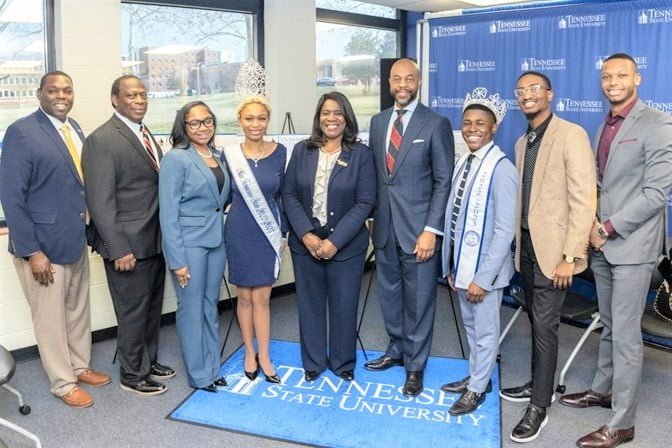By Kelli Sharpe, Alexis Clark
NASHVILLE, Tenn. (TSU News Service) – On the day the nation celebrated the life and legacy of Dr. Martin Luther King, Jr., MLK Day, Tennessee State University shared its plans for the historic $250 million from the State of Tennessee. It is the largest one-time investment to a historically black university by a state.
The funds come at a critical time as states across the nation are being held accountable even more for underfunding HBCUs. The funds are for capital improvement projects only as outlined by the State. University officials say long overdue repairs and upgrades are now on the way, citing many of the campus structures have gone without improvements for decades.
TSU President Glenda Glover says the much-needed funding will cover expenses for upgrades to several academic and student services buildings, in addition to the electrical and HVAC systems.
“We are excited to share with you our plans for using this historic funding that will assist with TSU’s continued growth and campus development as we provide students with the best academic environment possible.” Glover adds. “This will allow us to enhance our campus for further sustainability as we continue our service to our students.”
A total of six structures will see improvements. Some of these renovations began in Fall 2022, but students should expect continuous upgrades to the following buildings: Boswell Science Complex, Davis Humanities, Elliott Hall, Jackson, Harold Love, Sr. (LRC), and McCord first as university officials say it is best to begin with buildings that have reached or are near their life expectancy.

Boswell Science Complex is one of six buildings that will be a part of structures that will see improvements at the university.
TSU student leaders spoke about the excitement of announcing the improvements to their campus as they reflected on the day honoring civil rights icon, Dr. King.
“Today we are seeing that dream come into fruition as we are seeing six buildings being renovated to uplift TSU,” says Student Government Association President Kenneth Rolle, II. “I am glad to be on this side of history to say I was here when we started this project.”
SGA Vice President Aliyah Holmes shared the same sentiments and noted that one of the buildings slated for improvements is a major part of student life.
Gov. Bill Lee and lawmakers allocated the historic funding package in April 2022 for infrastructure developments and major improvements that also include outdoor lighting, HVAC system upgrades, and interior décor. President Glover thanked Gov. Lee and lawmakers and applauded State Rep. Harold Love, Jr. for his work to ensure TSU gets funds that had been withheld for decades. Love, who is also a TSU alumnus, believes the enhancements will play a greater role in attracting world-class students and faculty.
“This is a start of a multi-year project to make sure we invest in facilities at Tennessee State University. If we are providing a high-quality education, we must provide the facilities that are state of the art,” says Rep. Love. “These upgrades and improvements will help to sure that all of our students are equipped with all they need to be able to be great scholars and our faculty to be able to be great instructors.”
Rep. Love was joined by fellow Davidson County lawmaker Sen. Heidi Campbell and State Architect Ann McGauran.
TSU officials say the goal of the campus improvements is to eliminate life-safety issues, address deferred maintenance, and invest in academic buildings.
“TSU is working to extend the life expectancy of our facilities to better accommodate our students and to enhance their college experience while here,” says Dr. Curtis Johnson, associate vice president and chief of staff.
Dr. Learotha Williams, noted historian and TSU history professor, says President Glenda Glover and State lawmakers are to be commended for working together to right a wrong. He contends, most importantly, the funds are available now instead of being embroiled in a lengthy legal battle like in Mississippi and Maryland with its HBCUs.
“While I believe there are several factors that led to the State reaching an understanding and common ground with TSU, the efforts of President Glover and Rep. Love as the drum majors of justice to make this happen, can’t be underscored, says Dr. Williams.
He noted programs hosted by TSU colleagues to bring further awareness to the disparity in funding between 1890 institutions (HBCUs) and majority land-grant universities.
Shaun Wimberly, who serves as the student trustee for the university, summed it up best when he proclaimed he’s already thinking about his future that will include TSU.
“I’m excited for TSU’s future and what this funding and these upgrades will do for my school. I will be a proud legacy as my children will come here to get a quality education.”










